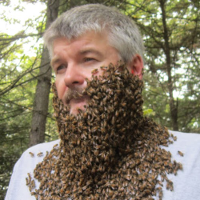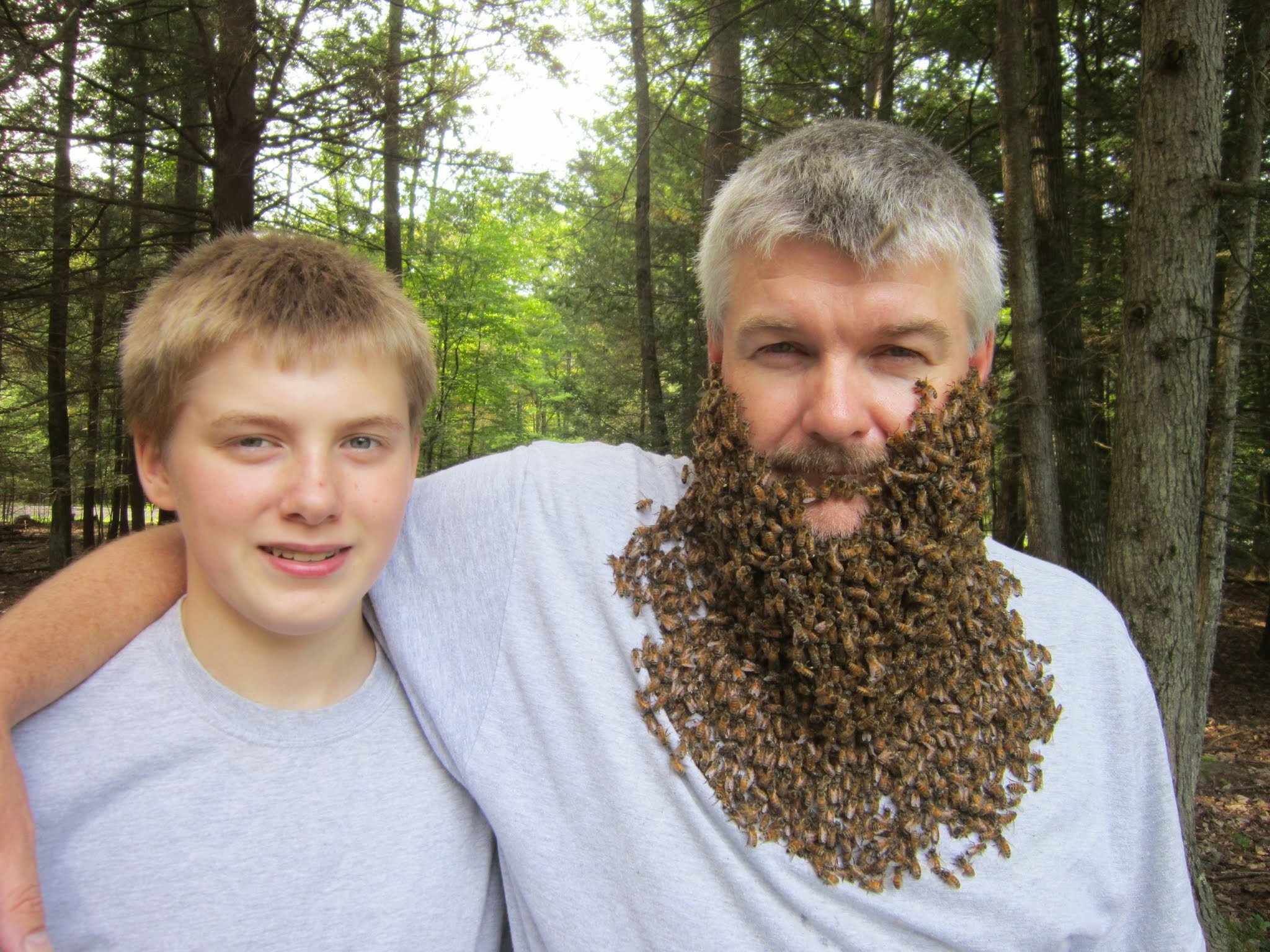
A bee beard is something that non-beekeepers have a hard time comprehending. I often get asked:
I'll walk you through the process and answer these questions.
Why?
Why not? There is really no good reason other than it looks impressive and makes for a good conversation. To some you look brave, to others you look crazy.
I first got the urge to do a bee beard when I saw a picture of a Finnish beekeeping friend who I looked to as a mentor. I wish I still had the picture to share. It was taken many years earlier in his youth. Thinking back, it was not just the bee beard that intrigued me, I had seen many before, but the photo composition. He was looking down at the camera in a very authoritative way. The sun light was perfect and there where a few bees in flight around his head. All of that, and the graininess of the old photo just burned it into my memory.
How did you get them on you?
The process is actually quite simple. You manipulate them using their allegiance to their queen. But before we do any kind of manipulating, you want to make sure they are well fed. A full belly makes them happy campers. It is what I like to refer to as Thanksgiving Syndrome. The easiest way is to feed them sugar syrup the night before.
Locate the queen and put her into a cage like this.
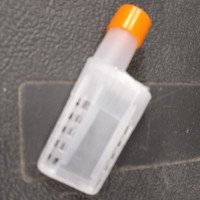
Once the queen is caged, a piece of fishing line is tied to it and hung around your neck.
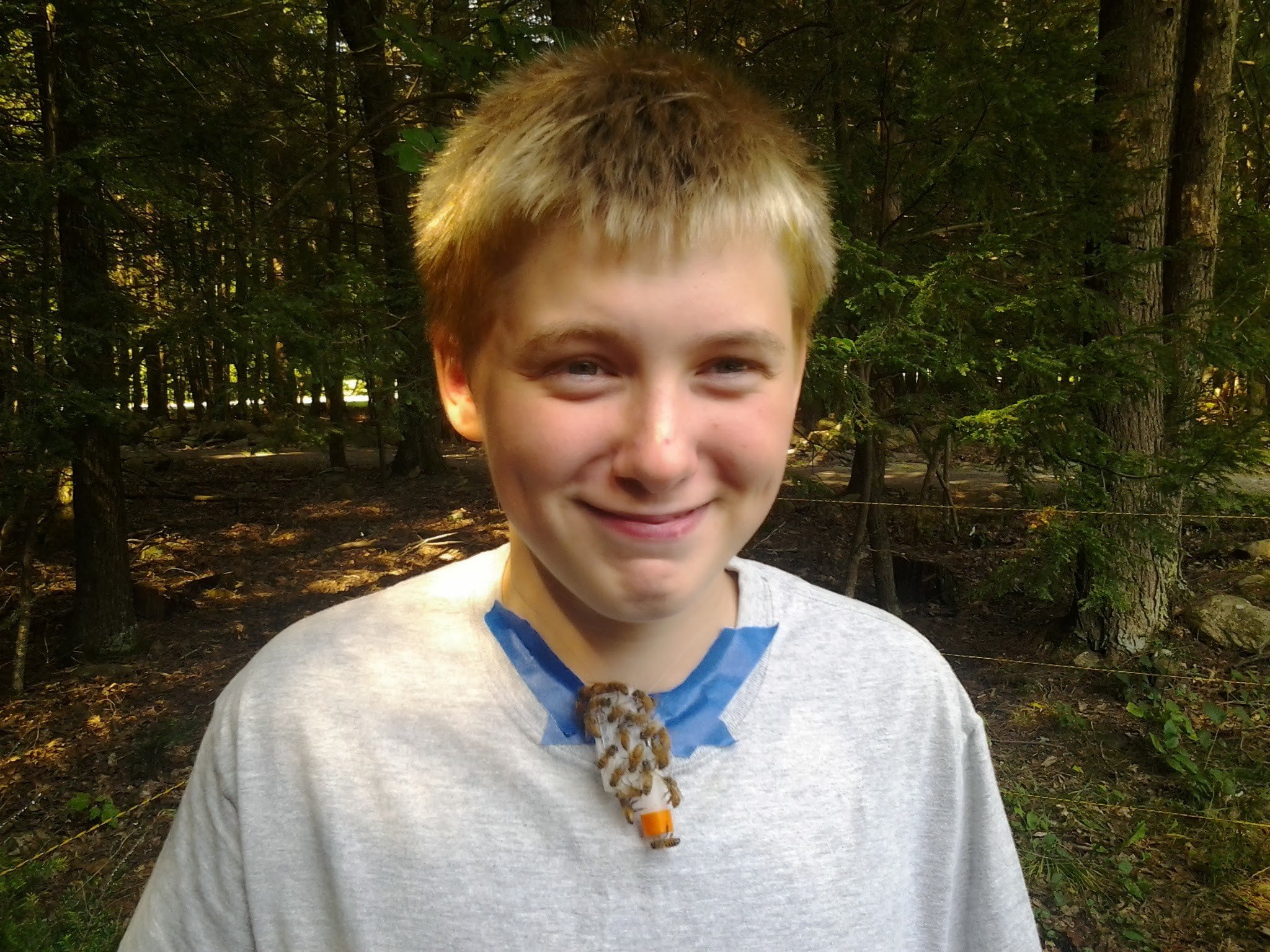
Ear plugs are a great precaution as well. The whole process can take a bad turn if a bee accidentally goes into your ear canal and gets stuck. You can also see a clip being used to keep the queen cage as close to my chin as possible.

Once the queen is in place, frames of nurse bees (young bees that have not left the hive yet and are unaccustomed to flying) are removed from the hive. Nurse bees get their name because their job is to care and feed the brood. You can find a frame of nurse bees by looking for young brood that has not been capped to pupate. Although not visible in the frame below, the center is all young brood that is circled by a ring of capped brood (light brown). The whitish/yellow in the top right of the frame is capped honey.
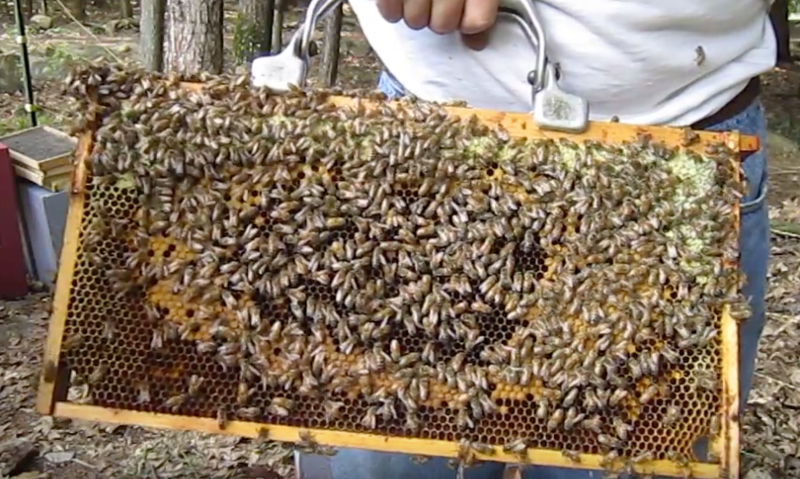
The frames of nurse bees are shook into a cardboard box which is then held against my chest just under the queen cage. The nurse bees sense the queen by the pheromone she emits and walk up my chest to her.
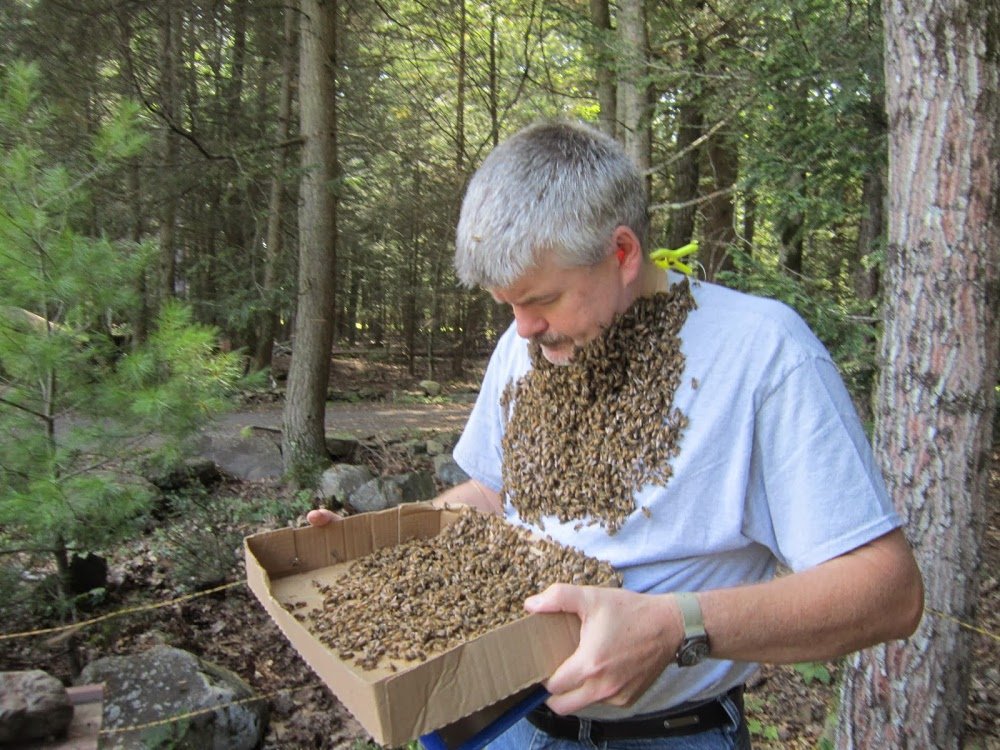
One thing I discovered is that bees don't like to walk on hair as can be seen by their reluctance to climb onto my goatee. I shaved it much closer the next time and it worked better.

How many times did you get stung?
I have never gotten stung more than once while doing a bee beard. Each time was my own fault and not due to an aggressive bee. It seems to always happen while removing them. More details below.
How did you get them to stay?
Their desire to be with their queen keeps them in place. Using mainly nurse bees that have never left the hive or flown before also helps.
What does it feel like?
This was the thing that surprised me the most when I did it the first time. Honeybees have hooks on their feet(?) that allow them to hang on to things, climb walls, and suspend upside down. These hooks don't hurt, but can be felt on the face. In fact they kind of tickle as they walk.
I also didn't anticipate the weight because a traditional beard seems weightless. However, a bee beard easily weighs between a pound or two.
But the most surprising aspect was the heat. When bees get clustered together they give off a lot of heat. My face got warm enough that it became uncomfortable and ultimately it was the heat that decided it was time to take it off.
How did you get them off?
This is the tricky part. I lean forward over the cardboard box and take a big jump up. The momentum on the way back down causes the majority of them to fall off my face and back into the box when my feet hit the ground. Those that don't fall off are swept off with a brush. Inevitably, there are always a few than end up going down my shirt and if I am not careful, they can easily feel pinched and in turn sting.
Honeybees are not aggressive like hornets and yellow jackets and will only sting when they feel threatened.
Hope you enjoyed reading this!
Beekeep On!
@bushkill
